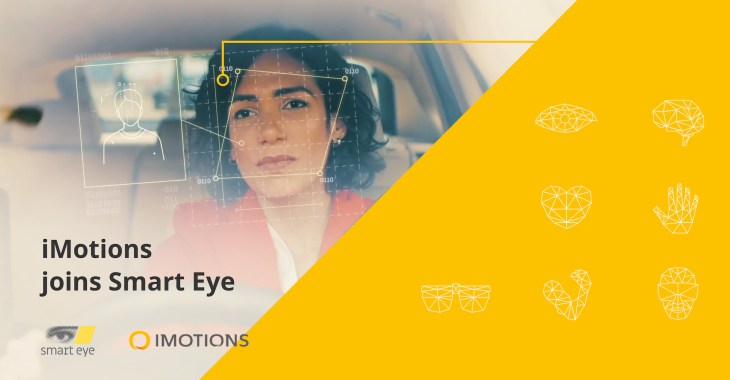Smart Eye, a supplier of driver monitoring systems for automakers, has agreed to acquire human behavior software company iMotions for $46.6 million just five months after it snapped up emotion-detection software startup Affectiva.
Smart Eye, a publicly traded Swedish company, said Tuesday this is a cash-and-stock deal. Smart Eye will provide $23.2 million (200 million Swedish kroner) in shares and the remaining amount will be paid in cash. iMotions, which employs 63 people, will operate as a standalone company within the Smart Eye Group. The company’s structure and management team will remain in place, according to Smart Eye.
The acquisition is notable because it signals growing consolidation within the driver monitoring systems segment, a trend that Smart Eye CEO and founder Martin Krantz confirmed in comments to TechCrunch.
“We expect to see continued consolidation of DMS vendors due to increased demand for DMS and interior sensing, which is already ramping up amongst OEMs,” Krantz told TechCrunch in an email. “With regulatory requirements in Europe — that are sure to follow in other regions of the world — we believe that nearly all global OEMs will procure their first or second generation DMS during the next couple of years. By joining forces with Affectiva, and now with iMotions, we are perfectly positioned for this development.”
Attention on DMS has increased as automakers roll out so-called Level 2 advanced driver assistance systems. There are five levels of automation under standards created by SAE International. Level 2 means two primary functions — like adaptive cruise and lane keeping — are automated and still have a human driver in the loop at all times. Level 2 is not considered full self-driving. These are advanced driver assistance systems that require a human being to be engaged and ready to take over.
The DMS typically involves a camera that watches the driver to ensure they’re paying attention and not abusing or stretching the capabilities of the system. GM and Ford use DMS to allow for hands-free driving. For years, Tesla has not had a camera, or in the case of the Model 3 and Y, used it to monitor the attentiveness of drivers using its Autopilot system. Instead, Tesla has relied on a sensor to gauge whether the driver’s hands were on the wheel.
While Tesla now equips Model X and Model S vehicles produced in 2021 or later with a camera, the feature is currently only available for Model 3 and Y vehicles equipped with Tesla Vision. That has been a sore spot for safety advocates in the United States, who have called on Tesla to change the system design of Autopilot to ensure it not being misused.
Regulators in Europe have already weighed in on what vehicles must be equipped with, opening up an opportunity for Smart Eye and other competitors.
While Affectiva and iMotion are related, Smart Eye contends that they offer different and complementing capabilities that can be folded into its own AI-based eye-tracking technology. The two companies actually used to work together, according to Smart Eye.
Affectiva, which spun out of the MIT Media Lab in 2009, uses computer vision, speech analytics and software to study facial expressions and analyze human emotion and cognitive states. Meanwhile, iMotion developed a software layer that brings together data coming in from multiple sensors and provides analytics that can then be used to improve driver safety and the driving (or riding) experience.
Affectiva and iMotions’ tech could help its new parent company establish market share in “interior sensing,” in which software and hardware are combined to monitor the entire cabin of a vehicle and deliver services in response to the occupant’s emotional state.
